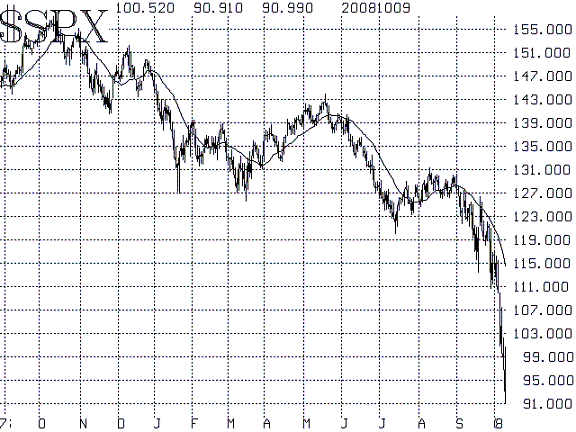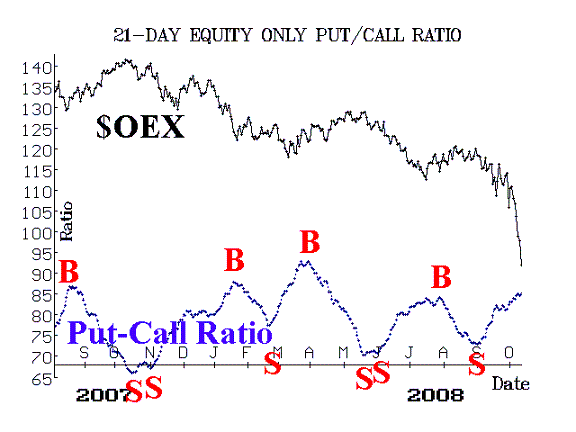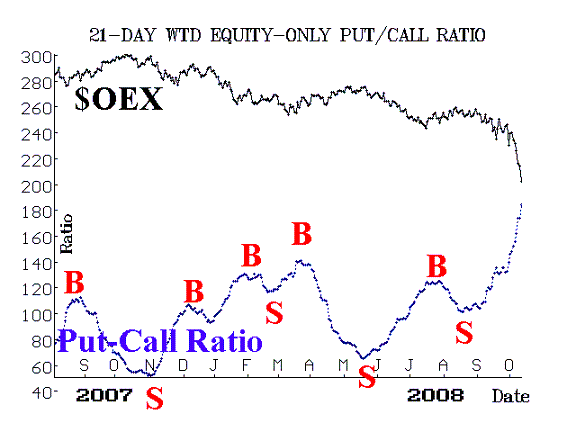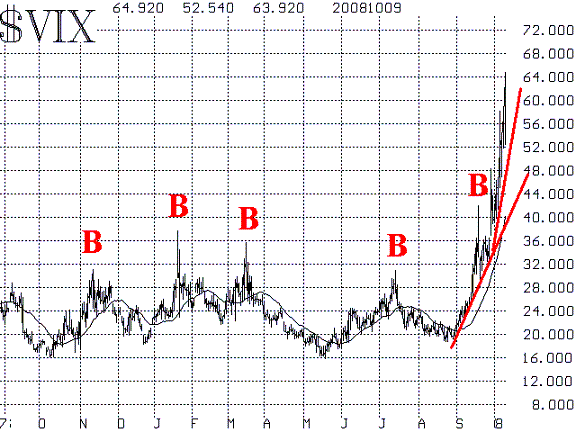| The McMillan Options Strategist Weekly |
| By Lawrence G. McMillan |
Published
10/10/2008
|
Options
|
Unrated
|
|
|
|
The McMillan Options Strategist Weekly
The selling has reached historic proportions. There literally is a "run on the market," as investors worldwide are dumping stocks. It seems that the major catalyst for this selling is the fact that the newest large banks primarily J. P. Morgan, Goldman Sachs, and possibly Morgan Stanley as well -- have issued massive margin calls to hedge funds and other professional traders who use these banks as prime brokers. These calls were not issued because of market losses, but more because the banks arbitrarily decided that they wanted their customers to use less leverage. Margin rates as low as 15% for broker dealers were raised to 35%; hedge funds who had been used to operating on high leverage were told that they had to bring accounts up to a much larger percentage of equity. In this illiquid environment, where all manor of exotic securities literally have no bids, the only place to raise the cash to meet margin calls was to sell stock. That is what really set this market over the edge -- as the first notice of these calls were issued on October 2nd and 3rd. There was something of a grace period to meet the calls, but funds realized they weren't going to be able to meet them other than by selling stock. There are rumors that the most massive of the calls are due Monday (October 13th). If so, this market could continue to decline through then.

There doesn't seem to be any reason for this increase in margin. The most benign one is that the banks became overly worried that their prime brokerage customers could cause problems with leverage. A more sinister reason revolves around the fact that the banks issuing the calls will likely wind up the owners of some excellent inventory (relatively illiquid preferreds, bonds, etc., which are being sold at prices well below theoretical value). They are in effect confiscating from their prime brokerage customers.

Expect to hear more about these margin calls in the near future, as it was finally discussed after Thursday's close on CNBC, for the first time.

There are no intermediate-term buy signals, but there are massive oversold conditions. The chart of $SPX is negative, although an oversold rally could carry as high as the declining 20-day moving average (currently at about 1130). Both equity-only put-call ratios are on sell signals and will remain there until they roll over and begin to decline. The standard ratio is being affected by heavy call selling, and so we will monitor put volume as well as the put-call ratio, when looking for the next buy signal. Breadth remains terrible, with five 90% down days in the chart on the left. The "stocks only" oscillator is now -1366, while the NYSE-based oscillator is -1189. $VIX continues to make all time highs, as traders are panicking to buy protection in the form of $SPX puts.

This is arguably the worst bear market in history because of its speed, although veterans of 1932 and 1974 may validly disagree.
Lawrence G. McMillan is the author of two best selling books on options, including Options as a Strategic Investment, recognized as essential resources for any serious option trader's library.
|